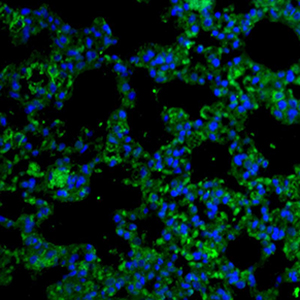Effects of piperlonguminine on lung injury in severe acute pancreatitis via the TLR4/NF-κB pathway

Accepted: 3 March 2023
HTML: 16
All claims expressed in this article are solely those of the authors and do not necessarily represent those of their affiliated organizations, or those of the publisher, the editors and the reviewers. Any product that may be evaluated in this article or claim that may be made by its manufacturer is not guaranteed or endorsed by the publisher.
Authors
Acute pancreatitis is an inflammatory response in the pancreas, involving activation of pancreatic enzymes. Severe acute pancreatitis (SAP) often causes systemic complications that affect distant organs, including the lungs. The aim of this study was to explore the therapeutic potential of piperlonguminine on SAP-induced lung injury in rat models. Acute pancreatitis was induced in rats by repetitive injections with 4% sodium taurocholate. Histological examination and biochemical assays were used to assess the severity of lung injury, including tissue damage, and levels of nicotinamide adenine dinucleotide phosphate (NADPH) oxidase 2 (NOX2), nicotinamide adenine dinucleotide phosphate (NADPH) oxidase 4 (NOX4), reactive oxygen species (ROS), and inflammatory cytokines. We found that piperlonguminine significantly ameliorated pulmonary architectural distortion, hemorrhage, interstitial edema, and alveolar thickening in rats with SAP. In addition, NOX2, NOX4, ROS, and inflammatory cytokine levels in pulmonary tissues were notably decreased in piperlonguminine-treated rats. Piperlonguminine also attenuated the expression levels of toll-like receptor 4 (TLR4) and nuclear factor-kappa B (NF-κB). Together, our findings demonstrate for the first time that piperlonguminine can ameliorate acute pancreatitis-induced lung injury via inhibitory modulation of inflammatory responses by suppression of the TLR4/NF-κB signaling pathway.
Ethics Approval
The experimental protocols were approved by the Institutional Animal Care and Use Committee of the Second Affiliated Hospital of Nanchang University, Nanchang, ChinaHow to Cite

This work is licensed under a Creative Commons Attribution-NonCommercial 4.0 International License.
PAGEPress has chosen to apply the Creative Commons Attribution NonCommercial 4.0 International License (CC BY-NC 4.0) to all manuscripts to be published.
Similar Articles
- T. Kocsis, J. Baán, G. Müller, L. Mendler, L. Dux, A. Keller-Pintér, Skeletal muscle cellularity and glycogen distribution in the hypermuscular Compact mice , European Journal of Histochemistry: Vol. 58 No. 3 (2014)
You may also start an advanced similarity search for this article.

 https://doi.org/10.4081/ejh.2023.3639
https://doi.org/10.4081/ejh.2023.3639










